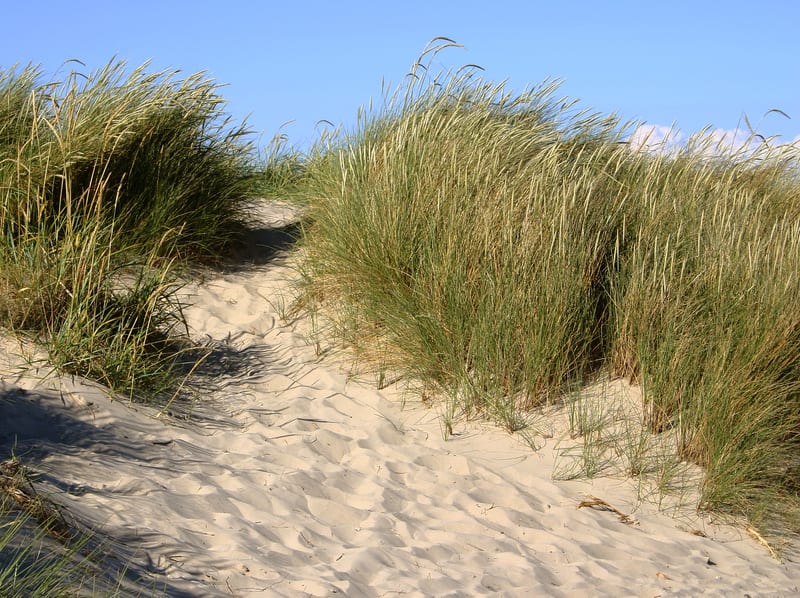Marram Grass, European Beachgrass, Beachgrass, Sand Reed
Ammophila arenaria

🌿 Morphology
🌞 Growing conditions
🌍 Origin and family
🌾 Uses
Warning: Despite the care taken in writing this sheet, it is essential to cross-reference sources before using or consuming any plant. When in doubt, consult a qualified professional
Permaculture uses
Ammophila arenaria is primarily used for dune stabilization and erosion control. It is not typically consumed as food, though the young shoots have been reported as edible in times of famine. It offers valuable habitat for various coastal invertebrates and birds. Its dense root system binds sand effectively, making it crucial for maintaining coastal ecosystems and creating windbreaks. No significant cultivars are generally mentioned.
Permapeople description
Marram Grass is a perennial grass found on coastal sand dunes. It is important for stabilizing the dunes and preventing erosion.
Botanical description
Ammophila arenaria, commonly known as marram grass, is a perennial rhizomatous grass belonging to the Poaceae family. It is characterized by its tall, erect culms that can reach up to 1.2 meters in height. The leaves are narrow, rolled inwards, and have a rough texture. The inflorescence is a dense, cylindrical panicle that emerges in summer. The plant spreads aggressively via rhizomes, forming dense colonies in sandy coastal habitats. The roots are deep and extensive, enabling the plant to tolerate harsh conditions such as salt spray, drought, and nutrient-poor soils.
Companion planting
Ammophila arenaria is typically grown in monoculture due to its aggressive growth habit and specialized habitat. It can coexist with other halophytes (salt-tolerant plants) adapted to coastal environments, but does not necessarily benefit from companion planting in the traditional sense. It doesn't have any documented strong positive or negative companion plant relationships.
Propagation methods
Ammophila arenaria is primarily propagated through rhizome division or seed. Rhizome division involves separating sections of the underground stems and replanting them. Seed propagation can be challenging due to low germination rates. Cuttings are not typically used. The most effective method is rhizome division during the dormant season.
History and traditions
Historically, marram grass has been extensively used in coastal communities for dune stabilization and thatching roofs. Its ability to bind sand made it a valuable resource for protecting settlements from coastal erosion and storm surges. Traditional practices involved harvesting and transplanting the grass to reinforce dunes or create new ones. The use of marram grass for these purposes dates back centuries, reflecting its ecological importance and practical applications.
Usage calendar
Planting: Spring or Autumn. Flowering: Summer (June-August). Rhizome Division: Late Autumn or Early Spring (dormant season). Maintenance (e.g., dune reinforcement): Year-round, but best during periods of lower wind and wave activity.
